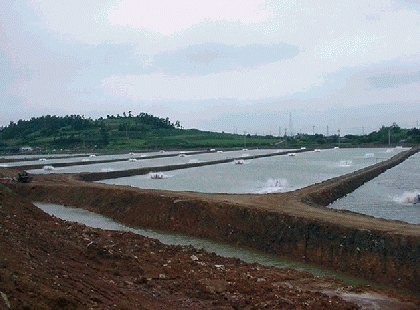|
Bang Khun Thian District
Bang Khun Thian ( th, บางขุนเทียน, ) is one of the 50 districts (''khet'') of Bangkok, Thailand. Its neighbors, clockwise from the north, are Bang Bon, Chom Thong, and Thung Khru Districts of Bangkok, Phra Samut Chedi district of Samut Prakan province and Mueang Samut Sakhon district of Samut Sakhon province. Bang Khun Thian is Bangkok's southernmost district, and the only one bordering the Bay of Bangkok (upper Gulf of Thailand). History Bang Khun Thian is an old district, believed to have been established in 1867 as an ''amphoe'' of Thonburi. In 1972, Thonburi and Phra Nakhon Provinces were combined into Bangkok metropolis. Administrative units in the newly combined capital province were renamed from amphoe and tambon to "district" (''khet'') and "sub-district" (''khwaeng''). Thus, Bang Khun Thian became a district of Bangkok, composed of seven sub-districts: Bang Khun Thian, Bang Kho, Chom Thong, Bang Mot, Tha Kham, Bang Bon, and Samae Dam. Due to po ... [...More Info...] [...Related Items...] OR: [Wikipedia] [Google] [Baidu] |
List Of Districts Of Bangkok
Bangkok is subdivided into 50 districts (''khet'', , , also sometimes wrongly called ''amphoe'' as in the other provinces, derived from Pali ''khetta'', cognate to Sanskrit ''kṣetra''), which are further subdivided into 180 subdistricts (''khwaeng'', , ), roughly equivalent to ''tambon'' in the other provinces. [...More Info...] [...Related Items...] OR: [Wikipedia] [Google] [Baidu] |
Crab-eating Macaque
The crab-eating macaque (''Macaca fascicularis''), also known as the long-tailed macaque and referred to as the cynomolgus monkey in laboratories, is a cercopithecine primate native to Southeast Asia. A species of macaque, the crab-eating macaque has a long history alongside humans. The species has been alternately seen as an agricultural pest, a sacred animal, and, more recently, the subject of medical experiments. The crab-eating macaque lives in matrilineal social groups of up to eight individuals dominated by females. Male members leave the group when they reach puberty. It is an opportunistic omnivore and has been documented using tools to obtain food in Thailand and Myanmar. The crab-eating macaque is a known invasive species and a threat to biodiversity in several locations, including Hong Kong and western New Guinea. The significant overlap in macaque and human living space has resulted in greater habitat loss, synanthropic living, and inter- and intraspecies conflicts ... [...More Info...] [...Related Items...] OR: [Wikipedia] [Google] [Baidu] |
Shrimp Farm
Shrimp farming is an aquaculture business that exists in either a marine or freshwater environment, producing shrimp or prawns (crustaceans of the groups Caridea or Dendrobranchiata) for human consumption. Marine Commercial marine shrimp farming began in the 1970s, and production grew steeply, particularly to match the market demands of the United States, Japan, and Western Europe. The total global production of farmed shrimp reached more than 2.1 million tonnes in 1991, representing a value of nearly US$9 billion. About 30% of farmed shrimp is produced in Asia, particularly in China and Indonesia. The other 54.1% is produced mainly in Latin America, where Brazil, Ecuador, and Mexico are the largest producers. The largest exporting nation is Indonesia. Shrimp farming has changed from traditional, small-scale businesses in Southeast Asia into a global industry. Technological advances have led to growing shrimp at ever higher densities, and broodstock is shipped worldwide. Virtua ... [...More Info...] [...Related Items...] OR: [Wikipedia] [Google] [Baidu] |
Mangrove Forest
Mangrove forests, also called mangrove swamps, mangrove thickets or mangals, are productive wetlands that occur in coastal intertidal zones. Mangrove forests grow mainly at tropical and subtropical latitudes because mangroves cannot withstand freezing temperatures. There are about 80 different species of mangroves, all of which grow in areas with low-oxygen soil, where slow-moving waters allow fine sediments to accumulate.What is a mangrove forest? National Ocean Service, NOAA. Updated: 25 March 2021. Retrieved: 4 October 2021. Many mangrove forests can be recognised by their dense tangle of prop roots that make the trees appear to be standing on stilts above the water. This tangle of roots allows the trees to handle the daily rise and fall of tides, which means that most mangroves get flooded at least twice per day ... [...More Info...] [...Related Items...] OR: [Wikipedia] [Google] [Baidu] |



